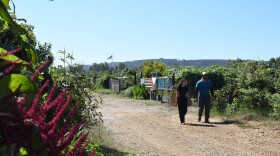An autopsy from the Mexican state of Sonora leaves some unanswered questions about a U.S. Border Patrol agent-involved shooting that left a teenage boy dead in Mexico.
Four months ago, a still-unidentified Border Patrol agent in Arizona shot and killed a 16-year-old Mexican boy across the border. The Border Patrol said agents had defended themselves against a barrage of rocks thrown by people on the Mexican side of the border.
But an autopsy performed in Mexico now suggests Jose Antonio Elena Rodriguez was shot in the back or after he fell.
Pima County Medical Examiner Greg Hess did not conduct the autopsy, but reviewed the Mexican authorities’ report.
"The report describes the gunshot wounds as traveling from his back to his front and from his right to his left and upwards," Hess said.
He said it is also possible that the boy was standing on a rooftop and fell after he was shot.
Luis Parra, the lawyer for the boy’s family said they are still considering suing the United States government.







